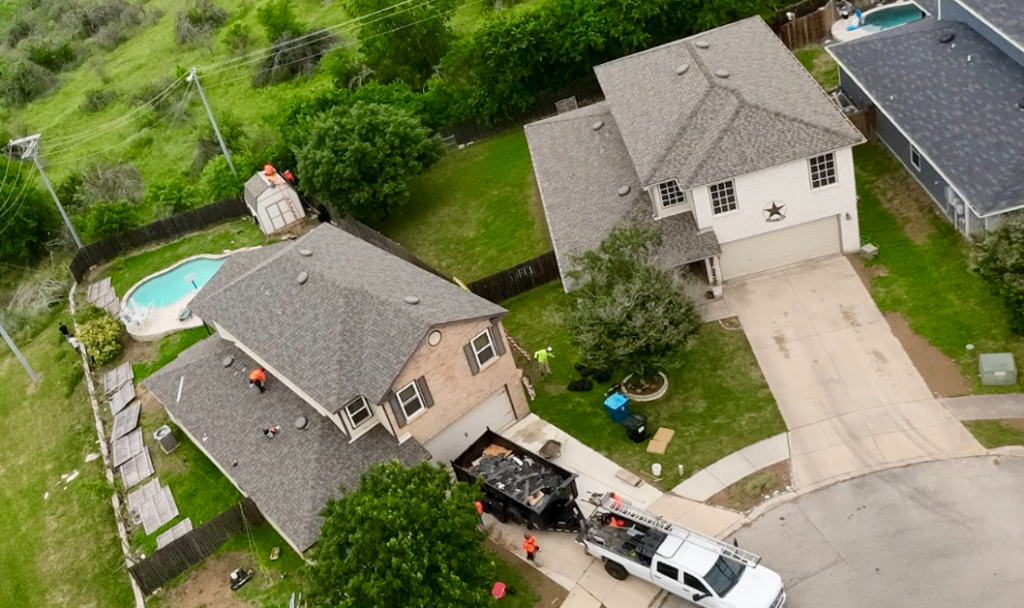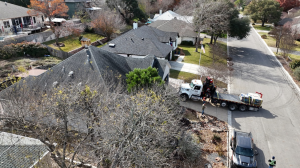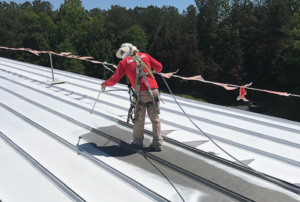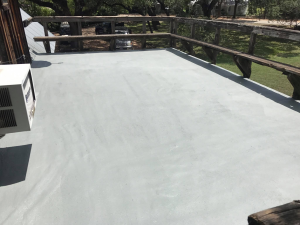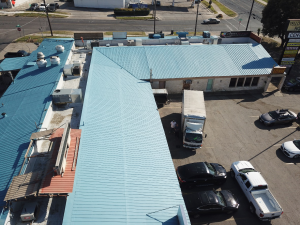When you think about home repairs, your roof might not always be at the top of your mind until there’s a leak or a storm blows through. Your roof is your first line of defense against the elements, so when it needs repair, it’s important to stay ahead of the curve. A professional roof repair can act as a proper roof leak prevention solution and can ensure your home stays guarded from rain, wind, and everything else Mother Nature throws at it. Let’s go over a roof repair checklist that every property owner needs to know.
Step 1: Assess the Roof’s Condition
Before diving into any roof repair, a thorough assessment is necessary. A professional roofing contractor will inspect the roof’s surface to identify signs of damage. This includes checking for cracked, missing, or curling shingles, broken tiles, or areas where the roofing material is worn down. The contractor will also look at the roof’s flashing (the metal parts around chimneys, vents, and skylights), as these are common areas for leaks. You might also see signs of wear from the inside of your home, such as water stains on the ceiling or in the attic. These are important clues that can point to where a roof repair is needed. A solid assessment at this stage can prevent bigger problems down the road, like leaks or structural damage, that would be harder and more expensive to fix.
Step 2: Evaluate the Roofing Materials
Once the assessment is done, the contractor will evaluate the materials that make up your roof. The type of roof you have—whether it’s asphalt, metal, tile, or something else—determines the approach and materials needed for repair. Some roofing materials, like metal or slate, are incredibly durable but might need a specialized repair approach. On the other hand, asphalt shingles are more common but can wear out more quickly, so regular repairs and maintenance are necessary. Knowing what type of material your roof is made from will also help you understand the long-term durability. A professional repair will ensure the right materials are used, making sure your roof stays sturdy and dependable in the future. 
Step 3: Inspect the Underlayment and Decking
Beneath the shingles or tiles, the underlayment and roof decking play a huge role in the integrity of the roof. Over time, these materials can degrade or suffer from water damage, especially if leaks go unnoticed. A professional roofer will check for signs of damage, like sagging or rotting wood. In some cases, the underlayment may need to be replaced entirely, especially if it’s old or damaged. While this might seem like an extra step, it’s crucial for ensuring your home is fully protected. Without a strong underlayment and decking, the roof won’t be able to handle the wear and tear of rain, snow, or high winds as effectively.
Step 4: Repair the Flashing
The flashing on your roof is one of the most critical components when it comes to leak prevention. Flashing is the metal around areas like chimneys, skylights, and vents that helps keep water from seeping into your home. If the flashing is damaged or improperly sealed, it can lead to leaks and water damage inside your home. During the roof repair, a contractor will inspect the flashing to ensure it’s intact and properly sealed. Any damaged flashing will be replaced or re-sealed to ensure water doesn’t make its way into vulnerable spots. This is an essential step for keeping your home well-guarded from water infiltration.
Step 5: Clear Away Debris
Over time, your roof can collect debris like leaves, twigs, and branches. While this might not seem like a big deal, accumulated debris can trap moisture and contribute to the growth of moss or algae. This not only weakens the roof’s structure but can also lead to issues like mold growth and leaks. A professional roofing team will clear away any debris, ensuring your roof has proper drainage and airflow. This simple step can extend the lifespan of your roof and prevent minor issues from escalating into major problems.
Step 6: Inspect Gutters and Downspouts
While your roof is the primary layer of defense, gutters and downspouts are just as important. Clogged gutters can cause water to back up and pool on your roof, leading to leaks and water damage. It’s also important that the downspouts direct water away from the foundation of your home. During the roof repair, the contractor will inspect the gutters to ensure they’re clear and in good condition. If necessary, they will also clean and repair the gutters to make sure water flows freely. This helps prevent water from pooling on the roof and causing structural damage. 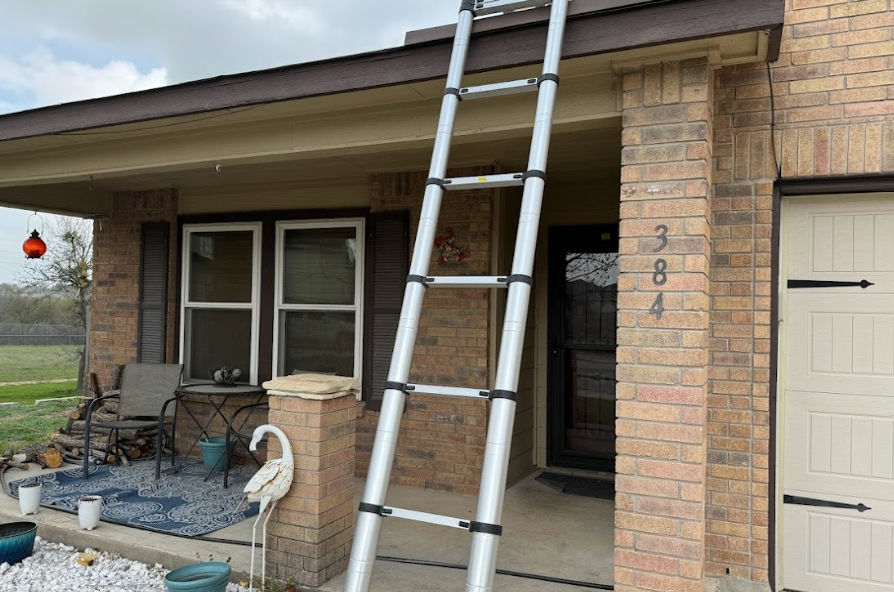
Step 7: Check the Roof Ventilation
Proper ventilation is essential for maintaining the long-term health of your roof and home. If your attic isn’t properly ventilated, heat and moisture can build up, leading to problems like mold growth, rot, and even premature shingle aging. Your roof repair should include a ventilation check to ensure that air is circulating properly. If there’s an issue with your attic ventilation, the contractor may suggest installing additional vents or repairing existing ones. This ensures that moisture doesn’t accumulate and cause unnecessary wear on your roof.
Step 8: Seal the Roof
Once all the necessary repairs have been made, the final step is to apply a sealant or coating to protect the roof from future damage. This protective layer will help prevent issues like water infiltration, UV damage, and moss growth. It also provides an extra layer of defense against harsh weather conditions, keeping your roof tough and durable for years. The sealant applied depends on the roofing material, but it’s always a good idea to protect your roof as much as possible. A strong, resilient roof will help ensure that your home stays well-guarded from the elements, no matter what weather comes your way. 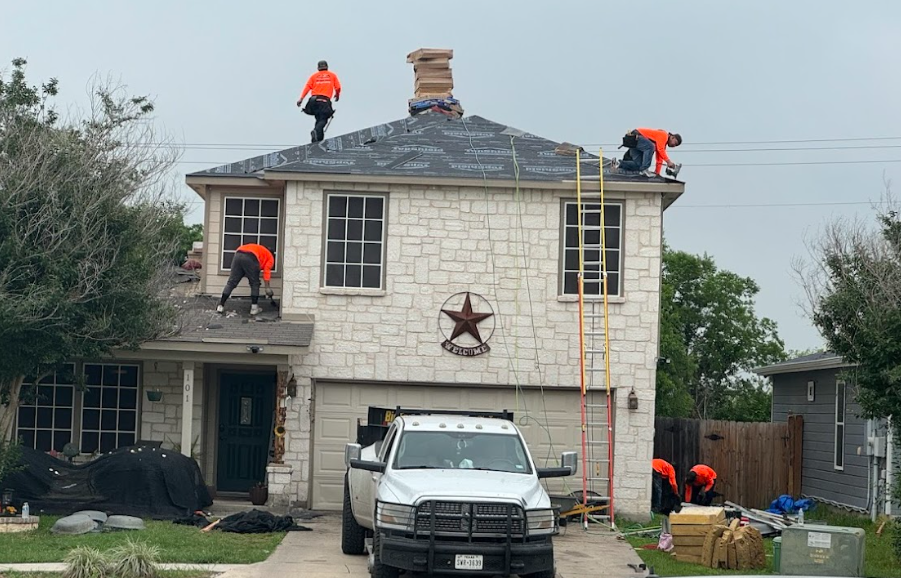
Why Roof Repair Matters
A well-repaired roof isn’t just about fixing a few shingles; it’s about making sure your home stays tough and ready for anything. With a solid roof repair, you’re not only fixing immediate issues but also ensuring that your home remains shielded from leaks, weather damage, and the elements for years to come.
Wrapping Up
Now that you’ve got the roof repair checklist, you can feel confident about what’s involved in the repair process. By following the right steps, you can ensure effective roof leak prevention solutions and avoid costly repairs down the road. Whether you have an asphalt shingle roof or another type, asphalt shingle roofers in New Braunfels, like Boomerang Building & Repairs, are here to help. Our expert team ensures your roof is strong, durable, and ready for whatever comes your way. Contact us today for a thorough reliable roof inspection and roof repair services in New Braunfels!


